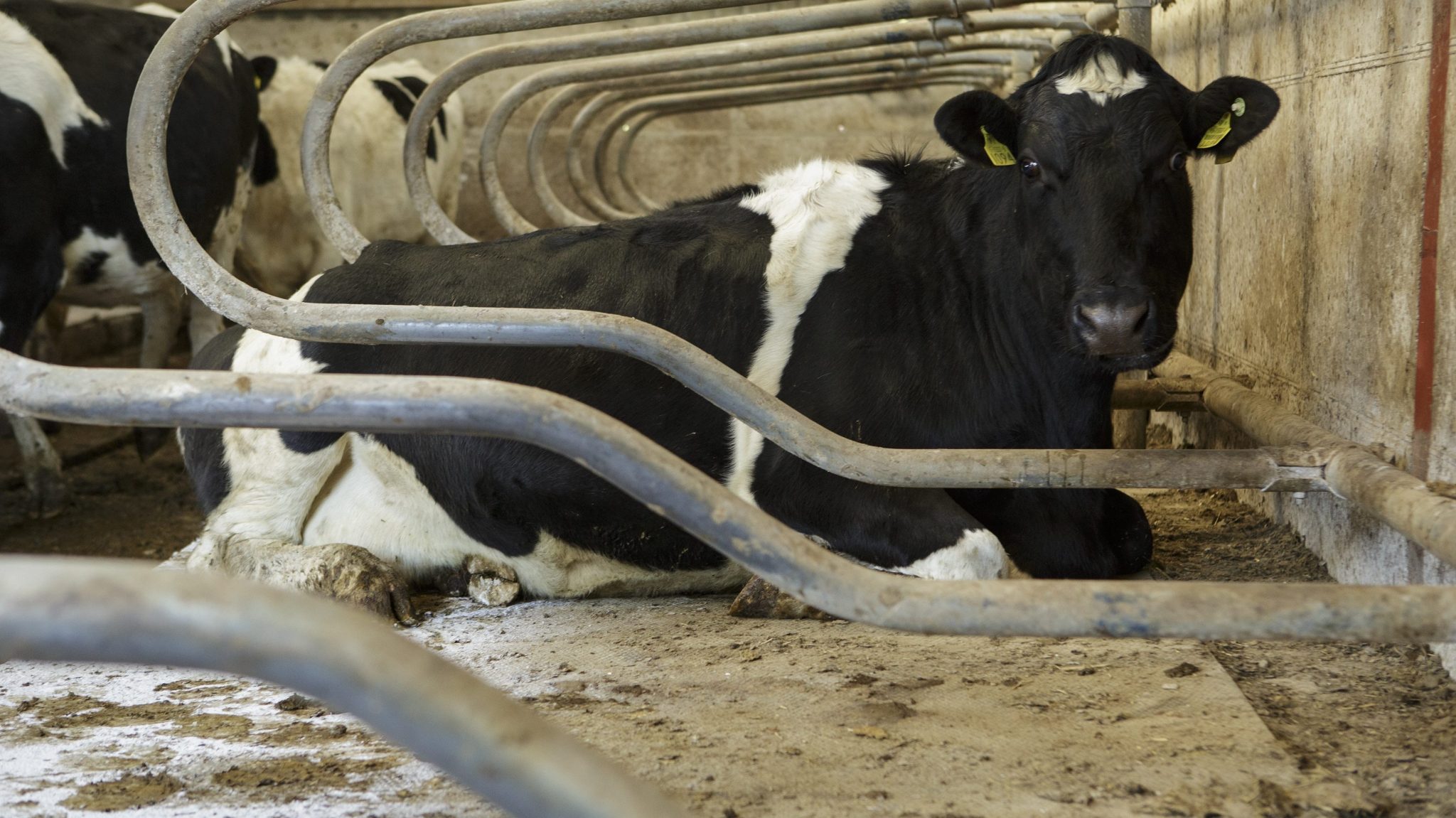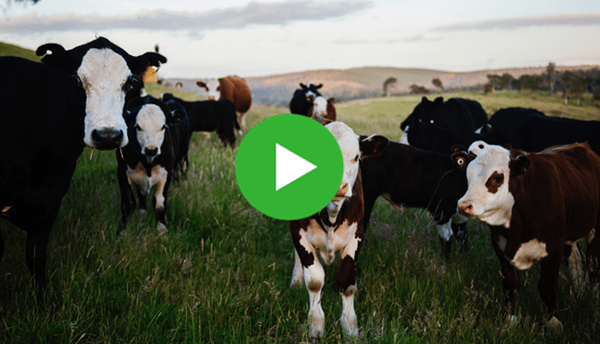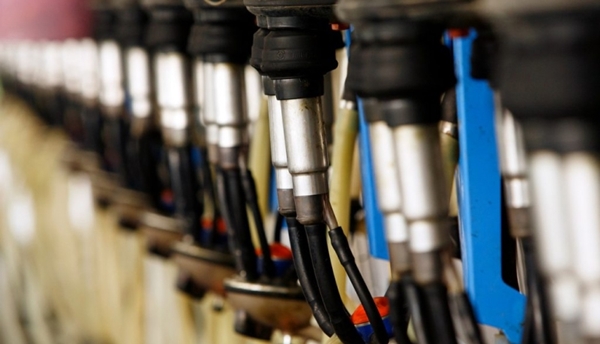

NEWS
Do calves need an IBR vaccine?
27th May 2020
TAGS
Turning calves out to grass for the first time is seriously rewarding. Rearing healthy calves in the first place takes great effort and hard work. Minimising the impact of diseases like diarrhoea and pneumonia can be challenging and this year was no exception with the storms of early spring to the warm daily temperatures and cold nights of April. Weaning dairy calves, dealing with coccidiosis threats, pneumonia and clostridial vaccination; the calf ‘to do’ list can be comprehensive. What about IBR calf vaccination?

IBR – Infectious bovine rhinotracheitis
Infection with IBR virus is widespread in the cattle population in Ireland, with evidence of exposure in over 75% of herds (both beef and dairy). It is capable of causing disease (both clinical and subclinical) resulting in huge economic losses at farm level through lack of production and treatment costs. The majority of infections are seen in cattle greater than 12 months of age. However all ages are at risk of IBR.

Clinical infections usually occur when animals are infected for the first time. Signs such as discharge from the eyes and nose, loud laboured breathing, high temperatures, resulting depression and reduced appetite may be experienced. Milk yield may be affected, and abortion may also occur. Subclinical infections are those without overt clinical signs and for this reason may go unnoticed for some time in a herd. Subclinical IBR can result in losses of 2.6kg of milk/cow/day.

Those infected for the first time shed high levels of the virus for approximately two weeks. At times of stress (e.g. mixing/housing/breeding/calving) the virus can reactivate, and that animal may shed again. Every time an animal sheds the virus it has the potential to infect more herd mates.
Control of IBR
There are three components to controlling this endemic disease;
- Biosecurity
- Culling
- Vaccination
Biosecurity
Biosecurity can be further divided into two parts. Bio exclusion and bio containment.
Bio exclusion (the process of keeping disease out of a herd) is of particular importance in Ireland as many herds purchase cattle (e.g. the stock bull), avail of contract rearing for heifers, attend marts or shows (present Covid-19 times excluded). IBR can cross distances of up to five metres so neighbouring cattle during the grazing season can also be a source of infection or vice versa.
Bio containment (the process of reducing the threat of infection within a herd) relies mainly on herd management – segregating of age groups for example.
Culling
Culling of animals which have tested positive for IBR is a quick method to reduce herd prevalence. However, in many herds it is not a practical option as there are simply too many animals which are positive. Remember, once infected an animal becomes a life-long carrier and therefore it would not be economically viable option.
Vaccination
For effective control of IBR, vaccination must:
- Reduce the number of new infections – Main cause of virus spreading in a herd
- Reduce severity of clinical signs – Limit cost of disease impact
The time to start vaccination depends on the particular situation of each farm. In the absence of virus circulation among the young calf group, vaccination is started at the age of 3 months and revaccination 6 months later. All subsequent revaccinations within 12 month periods. This will provide protection against IBR virus and minimise the number of animals that become carriers.
Herds that have a moderate to high prevalence of IBR, are high-risk and/or have clinical signs are best to remain on a six monthly vaccination programme until IBR is under better control in the herd. For the spring calving herd this will mean calves will receive their first dose of a live IBR vaccine in June/July 2020.
In high prevalence herds or where there is disease in the calves, vaccination will be needed sooner than 3 months. Intranasal IBR vaccination is the recommended route in order to overcome maternally derived antibodies in this scenario. An intramuscular vaccination programme then commences at three-four months of age as stated above. See video below explaining the vaccination protocol for Bovilis IBR Marker Live.

Bovilis IBR Marker Live – 12 month vaccination protocol starts by vaccinating the calf from 3 months of age
Bovilis IBR marker live provides protection by reducing clinical signs and virus excretion. It is the only single dose IBR marker vaccine for use either intranasally or intramuscularly. It is a 2ml dose with the fastest onset of immunity (four days after intranasal administration and 14 days after intramuscular administration).
The majority of herds in Ireland are of medium or high seroprevalence. Vaccination with a live IBR marker vaccine combined with biosecurity and monitoring are the most practical and appropriate control methods. Many herds are missing a trick by only vaccinating the cows. This is controlling clinical signs and the impact of IBR on production but not necessarily reducing the spread (to unvaccinated younger cattle) and therefore the number of new infections each year. The aim of whole herd vaccination is to reduce the level of IBR in the herd over time. In answer to the opening question – yes; to IBR vaccination of calves.
Talk to your vet today about IBR calf vaccination from 3 months of age, using Bovilis IBR Marker Live. For more check out our brochure here, our IBR page or Twitter page
References
1. Bosch et al (1996) An attenuated bovine herpesvirus 1 vaccine induces better protection than two inactivated marker vaccines. Veterinary Microbiology 52, 223-234
TAGS
Sign up to Bovilis® product and event information

MSD Animal Health
Red Oak North, South County Business Park, Leopardstown,
Dublin 18, Ireland
vet-support.ie@msd.com
PHONE
CATTLE DISEASES













